Level Three exercise program
These exercises and activities are for the older baby or toddler with torticollis. Only do these exercises if a physical therapist has talked to you about them. Call (414) 607-5280 with any questions or concerns.
Note: It is important for you to lay your baby on his tummy several times per day while awake and supervised. This is called “Tummy Time.”
Do the following exercises every day. Use very gentle pressure to stretch, and only do stretches when your baby is happy and calm. Stop stretching and try again later if your baby resists the stretch.
Sit to hands and knees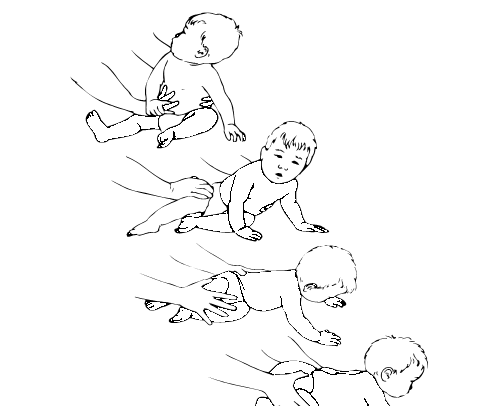 Start with your child in a sitting position. Bend your child’s left knee and place their left hand on the floor. Place your right hand on child’s right hip, your left hand on chest. Slowly turn your child’s trunk towards the left. Start with your child in a sitting position. Bend your child’s left knee and place their left hand on the floor. Place your right hand on child’s right hip, your left hand on chest. Slowly turn your child’s trunk towards the left. Help your child into a hands and knees position. In hands and knees, work on forward/backward rocking and weight bearing through arms. |
Hands and knees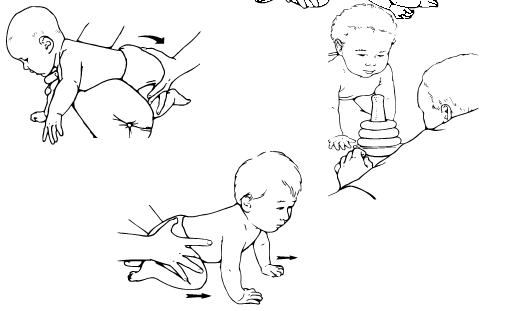 Put your child on hands and knees over a towel roll, boppy pillow or your leg. Help your child shift their weight from side to side to reach for a toy. Put your child on hands and knees over a towel roll, boppy pillow or your leg. Help your child shift their weight from side to side to reach for a toy. Help your child move their arms and legs to crawl. Place colorful toys in front of your child to encourage reaching or crawling forward. |
Sit and reach up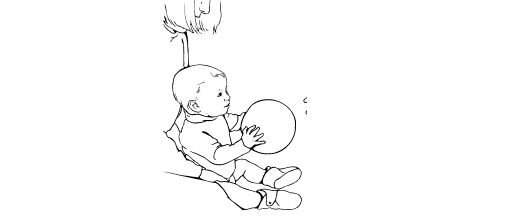 Help your child to bring their hands together in the middle. Help your child to bring their hands together in the middle. Have them reach overhead while sitting or kneeling. |
Kneeling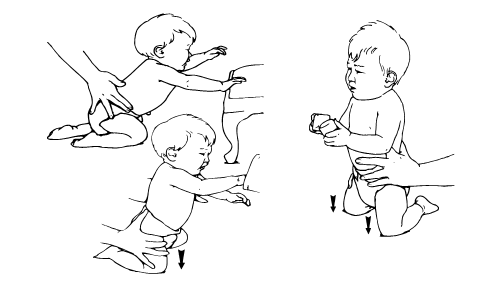 Put your child on their knees with a firm pillow or small bench in from of them. Have your child push on the bench with their arms. Put your child on their knees with a firm pillow or small bench in from of them. Have your child push on the bench with their arms.As balance improves, try to get your child to reach up and to the sides or have your child kneel without arm support. |
Pull to stand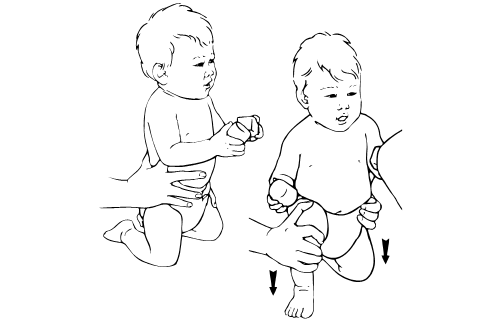 Help your child pull to stand leading with the right foot. Gently hold down the left leg and help your child lean left. Guide the right foot up to be the leading foot, bending at hip and knee. Help your child pull to stand leading with the right foot. Gently hold down the left leg and help your child lean left. Guide the right foot up to be the leading foot, bending at hip and knee. |
Standing weight shift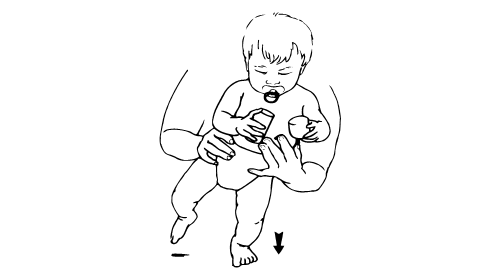 While your child is standing, help shift their weight from side to side. Try to get your child to reach sideways for toys. While your child is standing, help shift their weight from side to side. Try to get your child to reach sideways for toys. |
Cruising and Side bending
|
Walking with cart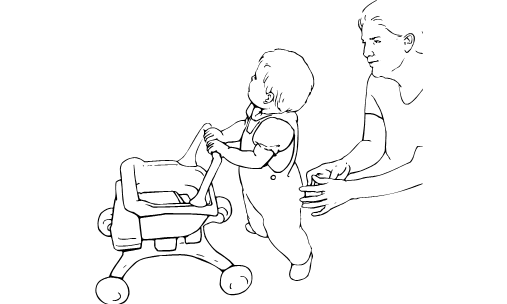 Help your child walk behind a sturdy walking toy such as a small grocery cart. You may need to add some weight to the toy to slow it down. Your child’s toes should point forward and their head should be straight (not tilted). Help your child walk behind a sturdy walking toy such as a small grocery cart. You may need to add some weight to the toy to slow it down. Your child’s toes should point forward and their head should be straight (not tilted). |
Simple changes that can help your baby’s progress
|
Therapy Skill Builders Inc. (3830 E Bellevue, PO Box 42050, Tucson AZ 85733
Visual Health Information (PO Box 44646, Tacoma WA 98444
VORT Corporation (PO Box 60132, Palo Alto, CA 94306




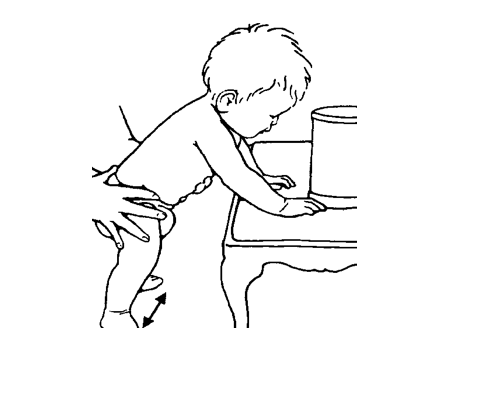 Cruising
Cruising